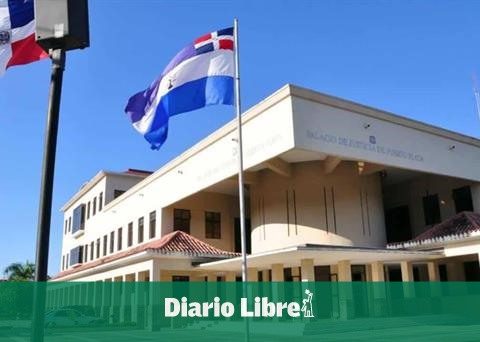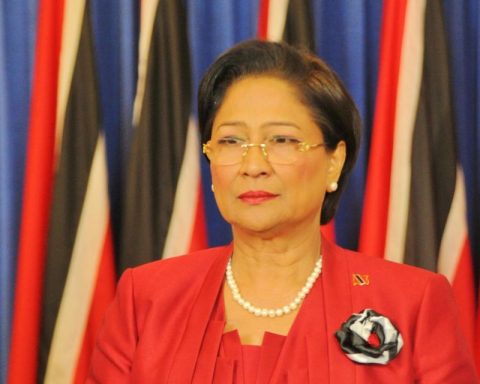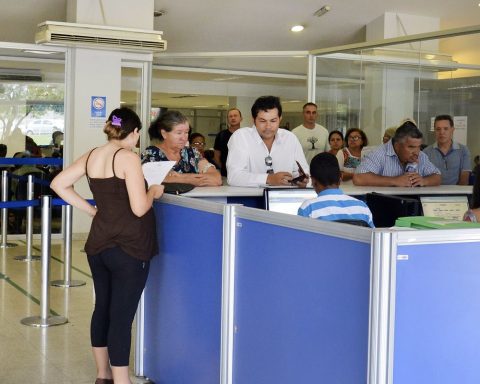According to INE projections, in the year 2022, the department of Santa Cruz concentrated the majority of the Bolivian population (28.5%), it was the one that contributed the most to the national GDP (31.5%) and also the one that contributed the most tax revenue (42%), customs collection (40%), total exports (30%) and total imports (41%). In addition, the department leads by far food production (70%), concentrates productive credit (47%) and social housing (40%) and even receives the largest number of remittances that arrive from outside the country (47%). , among other important economic indicators.
Santa Cruz is the place where the most diverse group of Bolivians lives, where natives and migrants from all latitudes chose this wonderful land as the ideal place to realize their dreams. With these notes ahead, it is evident that it is the region that promotes national development and its population is deserving of the “necessary resources” for road and productive infrastructure, sanitation of its basic needs and all the benefits that public investment entails, which we finance Bolivians with our present or future taxes.
The Social, Community and Productive Economic Model of the National Government is based on the premise that public investment is its star tool and the main engine of growth, since it has a multiplying effect that is complementary to that of private investment in the different sectors of the economy, favoring employment generation, demand for inputs and services, productivity, competitiveness and efficiency of production processes.
Despite this, when it comes to works financed with “public investment”, it turns out that, in 2020, Santa Cruz was only assigned 18% of the total public investment executed, below Cochabamba and La Paz, departments of the central axis. Thus, the allocation of public investment is not related to the effort of the Santa Cruz region.
On the side of public investment per capita, we will also confirm the previous extremes, since it turns out that on average a Santa Cruz receives less than the rest of Bolivians from other departments, for example in 2020, while for each Santa Cruz, Bs 617 was allocated for public investment, on the other hand, for each person from La Paz, 33% more was allocated, for a person from Cochabamba 63% more, and thus it increases until reaching the largest allocation, which represents 170% more than what a person from Santa Cruz received.
If, on the contrary, we analyze the allocation of public investment from the point of view of what it represents with respect to the production of each department; that is, if we relate it to the departmental GDP, we will again see that Santa Cruz is punished with an insufficient allocation. In this case, once again Santa Cruz is the lowest compared to the rest of the departments and the public investment assigned to it represents barely 2.7% of its GDP, with another department being assigned a value that represents the 9% of its GDP (more than triple speaking of proportions). Just as a pediatrician first considers the size and weight of the child to assign an ideal dose of medication; It is understood that the amount of the annual investment must be related to the size of the departmental economy, to represent a true and significant positive stimulus.
So, since we agree with the Government that public investment is very important to stimulate the momentum of each departmental economy, and that the State, according to the constitution, must always act as “a good father of a family”, it is It is time to settle this injustice with Santa Cruz, which, it must be said clearly, has been dragging on since long before the MAS government, although the last 15 years of government management, the situation worsened because SCZ went from receiving 22% to 18% of the public investment; therefore, the Government of the day bears the greatest responsibility to correct this unjust policy of assigning incentives for development.
It is not surprising, given these injustices, that the people of Santa Cruz demand a different form of administration, such as Autonomy or Federalism, models that, due to their proximity to the people, can reduce the current inaccuracies of public policy and recognize the correct magnitude of the needs of their regions. and the real value of your contributions. It is up to the Santa Cruz institutions to control a fairer allocation of public investment by the Central Government, establishing:
First, if the allocated amount is consistent with local needs, due to the size of the population and the general contribution of the people of Santa Cruz. Emphasize that, precisely for this reason, it is essential to carry out a quality National Population Census; not only because the number of inhabitants determines the amount of funds to be distributed by way of tax co-participation, but also because once the characterization of the population is known, it is possible to present technical proposals for the purpose of transferring fiscal resources to each of the regions.
Second, it is necessary to specify the total value of public investment for Santa Cruz and the details of the projects to be financed with these resources in order to monitor their fulfillment through civil society.
Finally, it is necessary to establish the necessary indicators to control the efficiency of the use of public resources and the relevance of the results and products obtained. It is the task of all Cruceños to ensure that we receive what we deserve, to guarantee the continuity of the development of our region and that opportunities continue to be generated here for all Bolivians.
According to INE projections, in the year 2022, the department of Santa Cruz concentrated the majority of the Bolivian population (28.5%), it was the one that contributed the most to the national GDP (31.5%) and also the one that contributed the most tax revenue (42%), customs collection (40%), total exports (30%) and total imports (41%). In addition, the department leads by far food production (70%), concentrates productive credit (47%) and social housing (40%) and even receives the largest number of remittances that arrive from outside the country (47%). , among other important economic indicators.
Santa Cruz is the place where the most diverse group of Bolivians lives, where natives and migrants from all latitudes chose this wonderful land as the ideal place to realize their dreams. With these notes ahead, it is evident that it is the region that promotes national development and its population is deserving of the “necessary resources” for road and productive infrastructure, sanitation of its basic needs and all the benefits that public investment entails, which we finance Bolivians with our present or future taxes.
The Social, Community and Productive Economic Model of the National Government is based on the premise that public investment is its star tool and the main engine of growth, since it has a multiplying effect that is complementary to that of private investment in the different sectors of the economy, favoring employment generation, demand for inputs and services, productivity, competitiveness and efficiency of production processes.
Despite this, when it comes to works financed with “public investment”, it turns out that, in 2020, Santa Cruz was only assigned 18% of the total public investment executed, below Cochabamba and La Paz, departments of the central axis. Thus, the allocation of public investment is not related to the effort of the Santa Cruz region.
On the side of public investment per capita, we will also confirm the previous extremes, since it turns out that on average a Santa Cruz receives less than the rest of Bolivians from other departments, for example in 2020, while for each Santa Cruz, Bs 617 was allocated for public investment, on the other hand, for each person from La Paz, 33% more was allocated, for a person from Cochabamba 63% more, and thus it increases until reaching the largest allocation, which represents 170% more than what a person from Santa Cruz received.
If, on the contrary, we analyze the allocation of public investment from the point of view of what it represents with respect to the production of each department; that is, if we relate it to the departmental GDP, we will again see that Santa Cruz is punished with an insufficient allocation. In this case, once again Santa Cruz is the lowest compared to the rest of the departments and the public investment assigned to it represents barely 2.7% of its GDP, with another department being assigned a value that represents the 9% of its GDP (more than triple speaking of proportions). Just as a pediatrician first considers the size and weight of the child to assign an ideal dose of medication; It is understood that the amount of the annual investment must be related to the size of the departmental economy, to represent a true and significant positive stimulus.
So, since we agree with the Government that public investment is very important to stimulate the momentum of each departmental economy, and that the State, according to the constitution, must always act as “a good father of a family”, it is It is time to settle this injustice with Santa Cruz, which, it must be said clearly, has been dragging on since long before the MAS government, although the last 15 years of government management, the situation worsened because SCZ went from receiving 22% to 18% of the public investment; therefore, the Government of the day bears the greatest responsibility to correct this unjust policy of assigning incentives for development.
It is not surprising, given these injustices, that the people of Santa Cruz demand a different form of administration, such as Autonomy or Federalism, models that, due to their proximity to the people, can reduce the current inaccuracies of public policy and recognize the correct magnitude of the needs of their regions. and the real value of your contributions. It is up to the Santa Cruz institutions to control a fairer allocation of public investment by the Central Government, establishing:
First, if the allocated amount is consistent with local needs, due to the size of the population and the general contribution of the people of Santa Cruz. Emphasize that, precisely for this reason, it is essential to carry out a quality National Population Census; not only because the number of inhabitants determines the amount of funds to be distributed by way of tax co-participation, but also because once the characterization of the population is known, it is possible to present technical proposals for the purpose of transferring fiscal resources to each of the regions.
Second, it is necessary to specify the total value of public investment for Santa Cruz and the details of the projects to be financed with these resources in order to monitor their fulfillment through civil society.
Finally, it is necessary to establish the necessary indicators to control the efficiency of the use of public resources and the relevance of the results and products obtained. It is the task of all Cruceños to ensure that we receive what we deserve, to guarantee the continuity of the development of our region and that opportunities continue to be generated here for all Bolivians.
;


















